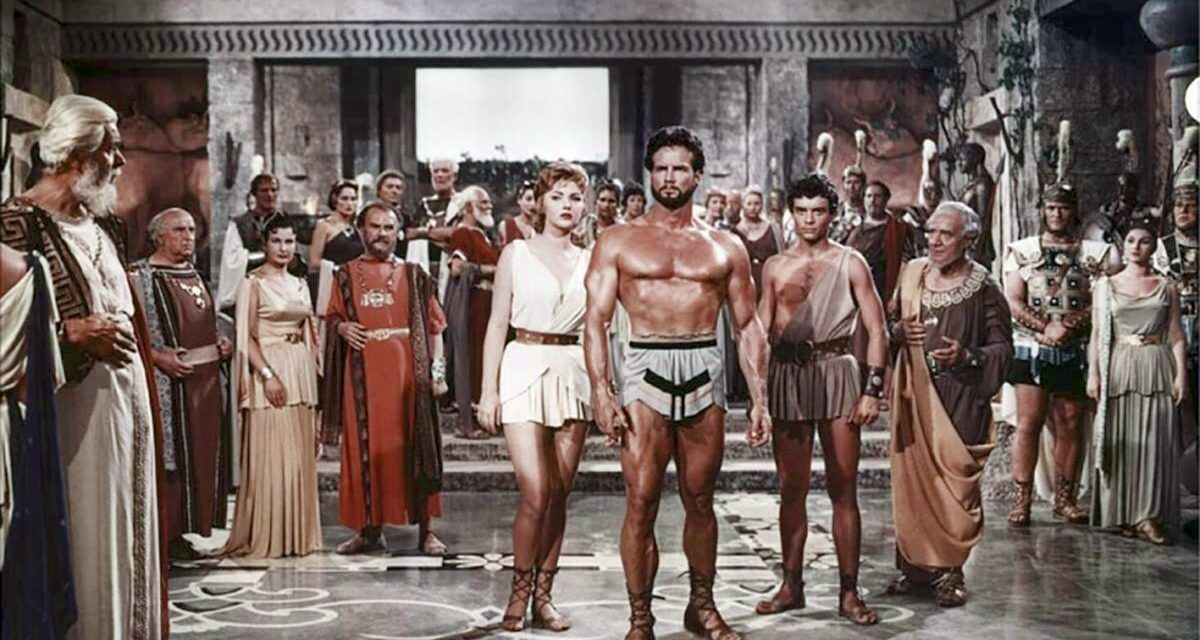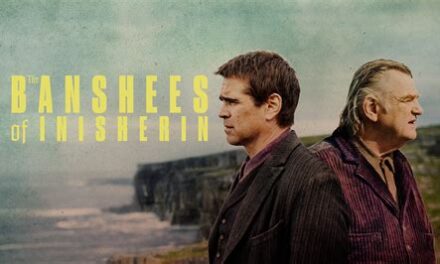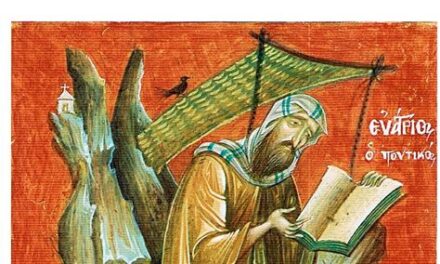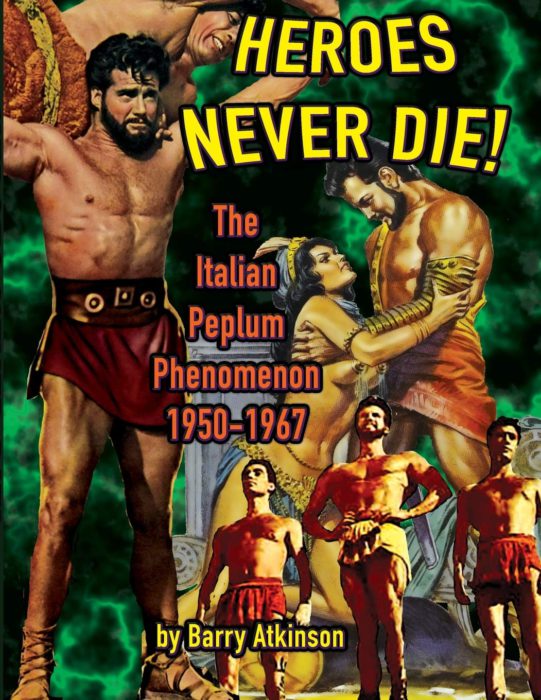 “Heroes Never Die! The Italian Peplum Phenomenon 1950-1967” (Midnight Marquee Press, Inc., 2018) by Barry Atkinson is a pleasure to read. “Peplum” refers to a loose garment often worn by women in ancient times, but Atkinson includes swashbucklers in which no peplum is worn, with pirates, musketeers, barbarians, Vikings and even Robin Hood and Zorro. The genre is also called Sword and Sandal or Torch and Toga. Heroes, nevertheless, often wore little more than leather trunks and oil for shimmering bulk. Considering the elaborate yet anachronistic hairdos, perhaps they should be called hairspray films.
“Heroes Never Die! The Italian Peplum Phenomenon 1950-1967” (Midnight Marquee Press, Inc., 2018) by Barry Atkinson is a pleasure to read. “Peplum” refers to a loose garment often worn by women in ancient times, but Atkinson includes swashbucklers in which no peplum is worn, with pirates, musketeers, barbarians, Vikings and even Robin Hood and Zorro. The genre is also called Sword and Sandal or Torch and Toga. Heroes, nevertheless, often wore little more than leather trunks and oil for shimmering bulk. Considering the elaborate yet anachronistic hairdos, perhaps they should be called hairspray films.
Beefcakes such as Steve Reeves, Reg Park, Reg Lewis, Gordon Scott, Gordon Mitchell, Mark Forest, Ed Fury, Alan Steel and Dan Vadis were bodybuilders who played Hercules, Samson, Goliath, Maciste, Ursus, gladiators, Sandokan or the son of a legendary figure, but these were interchangeable depending on the country.
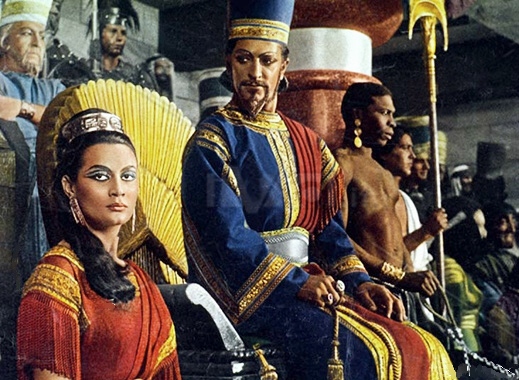
Rosalba Neri as Delilah
Starlets such as Chelo Alanso, Gianna Maria Canale, Joan Collins, Leonora Ruffo, Belinda Lee and Rosalba Neri filled roles from queens to damsels in distress. Yet, some women wore pants and wielded weapons with skill, such as the Amazons or the adventures of the pirate, Mary Read. When a director needed a powerful leader or villain, he asked Massimo Girotti, Vincent Price, Christopher Lee, Jack Palance or Livio Lorenzon.
The setting could be ancient Greece, Rome, Egypt, Babylon, Arabia, Israel, or cold Gothic villages in the north, tropical islands in equatorial seas, tents in deserts or medieval castles. Scenes were often shot in the Lapilli quarries or before the Gelato Falls. It was a guilty pleasure to watch pagan dancing girls and brutal battles scenes, but Italians had more tolerance for women being whipped and animals getting hurt than British or American audiences, so many films were strictly edited.
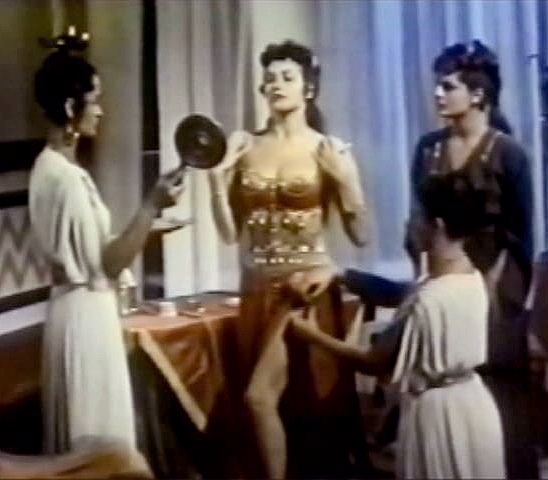
Yvonne De Carlo as Mary Magdalene
Radical masculinity and femininity pervaded peplum. Thrones were appropriated unjustly, but restored by the end. The hero is only caught in a net or surrounded by blades, but escapes, often by bending bars, to rescue slaves who then help in the retribution. Almost inevitably, someone cries, “Follow me!” The villain usually said, “Marry me and I’ll let him live” or “Marry me and I’ll free your people.” There had to be at least one secret passageway. The hero proves himself with a great feat of strength, like beating a lion or bigger brute. Brawls in taverns, pits of spikes or snakes, interrupted weddings, long battle scenes and the destruction of huge man-made sets was expected. A midget may provide comic relief or a bunch of them may give us the creeps. Priests and priestesses offered human sacrifices. Instruments of torture were madly devious. Monsters were common too, perhaps a dragon, cyclops, giant, sea monster or even moon men!
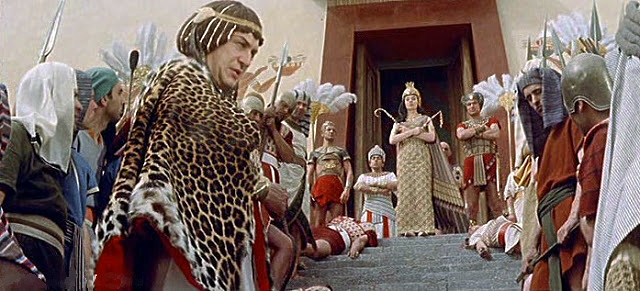
Vincent Price in Nefertiti, Queen of the Nile with Jeanne Crain
Several pepla have the word “black” in the title, but there may not be any black people in the cast, e.g. The Black Brigand, The Black Captain, The Black Cavalier, The Black Knight, The Black Lancers and The Black Shield. Besides, there is The Red Cloak, The Red Eagle, The Red Sheik and also The Crimson or Scarlet Blade. Of course, we have The Golden Arrow, The Golden Blade, The Golden Falcon and The Golden Hawk.
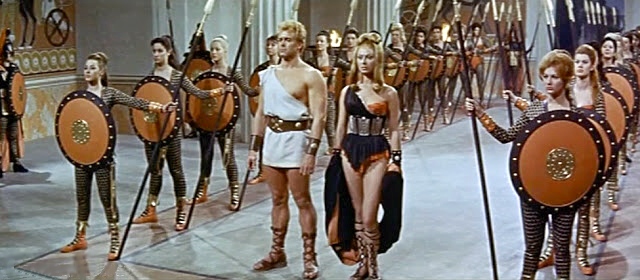
Colossus and the Amazon Queen with Ed Fury & Dorian Gray
Several are The Lion of this or that, like The Lion of Castille and The Lion of Thebes. Night was another theme, e.g., Night Creatures, The Night of the Great Attack and Night of the Nameless, to name a few. Expect to find the vengeance or revenge of some hero or another, e.g. The Revenge of Ivanhoe and The Revenge of Spartacus. Over a dozen are entitled The Sword of something, e.g. The Sword of Ali Baba, The Sword of Damascus, The Sword of El Cid and Sword of Venus. Some combine the word “terror” with something, e.g., Terror of the Black Mask, The Terror of the Red Capes and The Terror of the Seas.
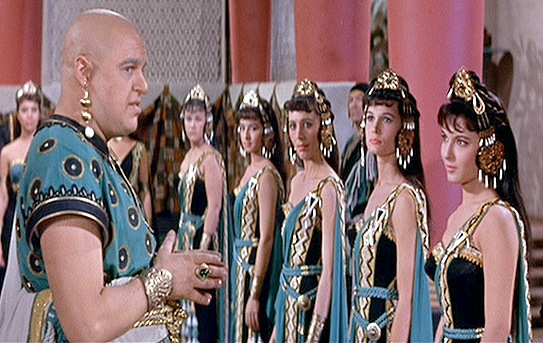
Elana Eden in The Story of Ruth
I have shown a few pepla in my Religious Movie Seminar, including The Queen of Sheba (1952), The Sword and the Cross (1958), Esther and the King (1960), The Story of Ruth (1960), Joseph and His Brethren (1960), David and Goliath (1961), Constantine and the Cross (1962), Sodom and Gomorrah (1962), Gideon and Samson (1965), and will soon show Herod the Great (1959), Head of a Tyrant [Judith and Holofernes] (1959) and Saul and David (1964).
Classic peplum in the heyday, 1959-1963, includes: The Battle of Marathon; Hercules Unchained; The Revenge of Hercules; Maciste in the Valley of the Kings; The Giants of Thessaly; Revenge of the Barbarians; Goliath against the Giants; Ursus, Son of Hercules; The Trojan Horse; The Invincible Gladiator; Nefertiti, Queen of the Nile; Duel of the Titans; The Thief of Baghdad; Suleiman the Conqueror; Revolt of the Mercenaries; Ursus, the Rebel Gladiator; The Fury of Achilles; The Legend of Aeneas; The Seven Tasks of Ali Baba; The Son of the Sheik; The Hero of Babylon; The Executioner of Venice, and The Lion of St. Mark.
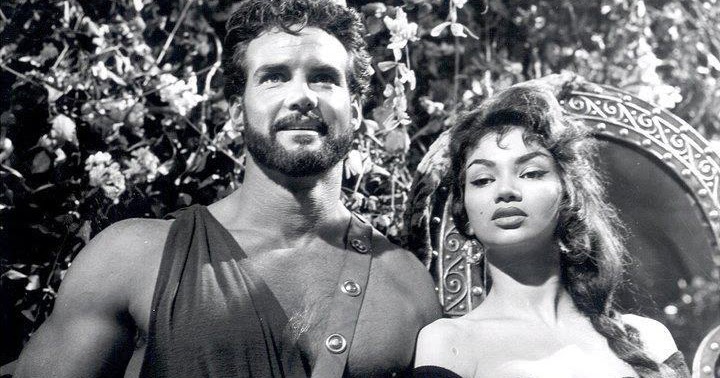
Steve Reeves & Chelo Alanso
The tragedy is that many pepla have been lost or so neglected that digital copies have very poor color and sound. It is a pity that serious efforts to preserve this treasury have been too little or too late. How Atkinson, who is not a highly educated scholar, was able to compile sufficient data about hundreds of old foreign films is amazingly commendable. Although we might see a green tinted picture, speckled with interference, Atkinson remembers how glorious they looked on the big screen in his youth. Despite poor recording and low budgets, Italian conductors often composed magnificent scores.
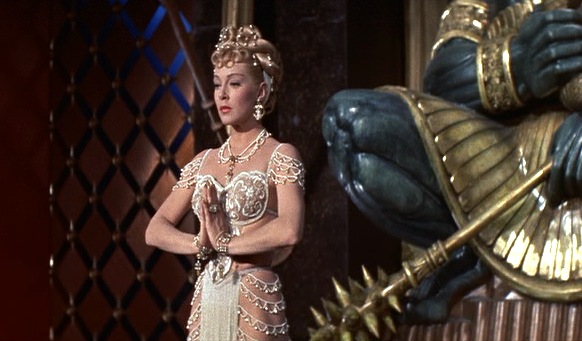
Lana Turner in The Prodigal
Peplum faded away by 1967. The scripts became too predictable. Spaghetti Westerns followed. Tastes were changing, but not always for the better. Inferior takeoffs in the 1980s introduced feminism or nudity. American, British, French and German filmmakers also produced similar movies on low budgets with casts of thousands, but big budget blockbusters of today with CGI technology are not true peplum.
Despite the generally amusing nature and purpose of this genre, with lots of laughable camp, dozens of works are thoughtful, creative and even edifying. In any case, by transporting viewers to a mythological period when life was simpler, and where heroes always defeated villains and vindicated the oppressed, peplum provided hope and consolation in troubled times.
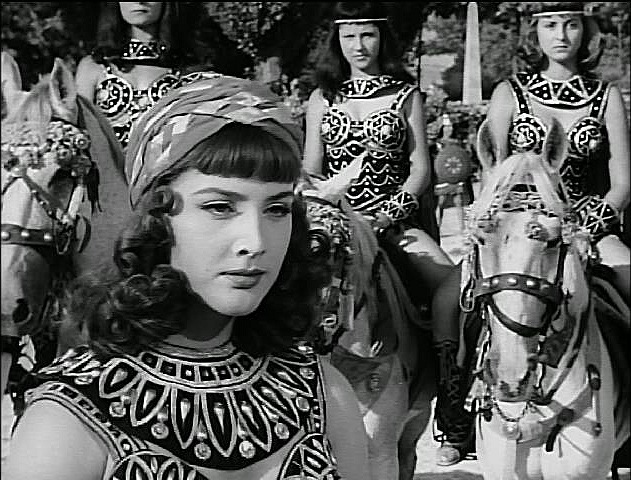
Leonora Ruffo as the Queen of Sheba

